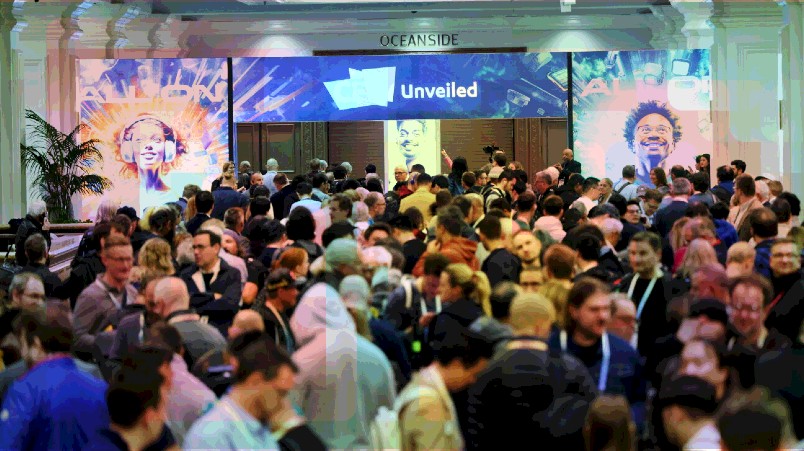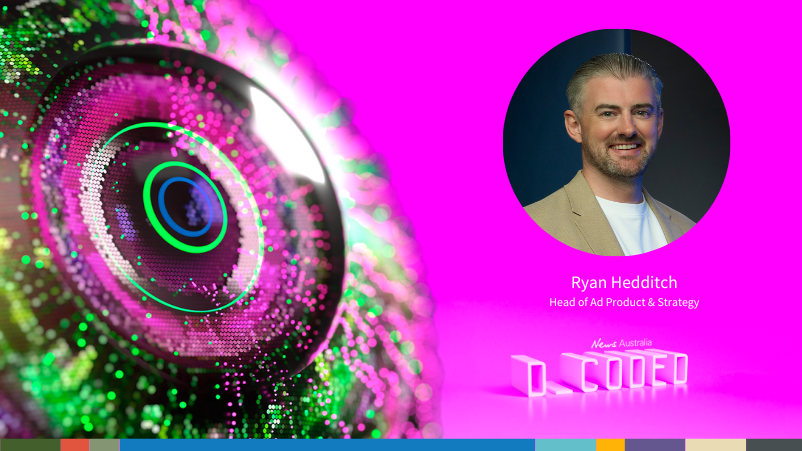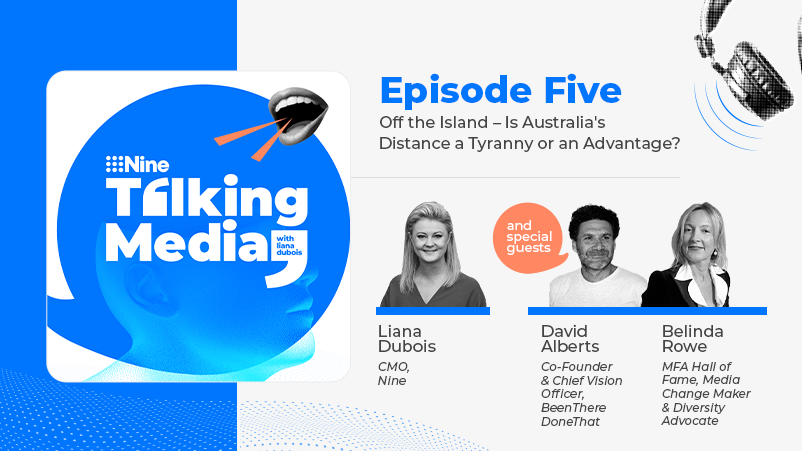Rise of the robo marketer? Four ways AI is reshaping the marketing model, brand toolkit, consumer experience for Pfizer, L'Oreal, Duolingo and Mastercard

How AI is transforming marketing inside and out was a big theme at global consumer electronics jamboree CES. Top level marketers from Pfizer and L'Oréal to Mastercard, Duolingo, Qualcomm, Lenovo and Annalect unpacked how they’re harnessing AI for marketing, creative and product – with some predicting the rise of the "robo marketer". Here are some of the key brand narratives and use cases for AI emerging from this year’s event.
It started last year with a big consolidation of our agency structure. You need to have an agency system that’s structured and streamlined. Then you need to have all the different pieces come together around your data and your content production.
Pfizer: AI reshaping agency models, improving creative risk-taking and transforming the marketer’s work bench
AI is opening up opportunities to connect with consumers in a meaningful way and will see brands shift from a world of advertising to doing more for customers, Pfizer’s global marketing chief, Drew Panayiotou, said.
Importantly, it’s also cracking the aperture open for more creative risk taking, shaking up agency models and bringing new ways of working in its wake, the CPG giant’s marketing chief said.
Like many CMOs, Panayiotou saw AI enabling brands to get closer to the holy grail of delivering the right message at the right time to the right audience. He noted 30 per cent of the data generated is healthcare data and it’s only increasing. But to realise the opportunity, marketing orchestration has to be overhauled.
“When you have a scaled global business with multiple brands, a big part of what we’re doing to unleash the power to reach audiences, connect with people and go from advertising to experiences is rejigging the way we work and how marketing happens,” Panayiotou said. “It started last year with a big consolidation of our agency structure. You need to have an agency system that’s structured and streamlined. Then you need to have all the different pieces come together around your data and your content production.”
Pfizer has brought on the Adobe martech stack as well as other tools to create an internal platform called ‘Charlie’. “This is the ultimate marketer’s work bench, to enable eventually, AI to power our creative, our messaging and media. The explosion of what we can do is awesome, but it’s also complicated and moves quickly. Our ability to leverage technology is going to change the way we communicate. But you have to get the inside of the company ready to change the outside of how the company shows up.”
For Panayiotou, AI is also there to turbocharge creative. Pfizer’s recent migraine campaign with Google, for example, tapped a range of data sets around weather alerts to drive personalised, responsive creative.
“For me though, I don’t think we’ve cracked the nut as an industry between media and content enough – have to get these to be in service of the person we’re trying to reach,” he continued. “We need both of these to be in service of the person we’re trying to reach.
“This year, and with our partners IPG and Publicis, we’re really pushing for more creative, and to open the aperture of what we’re willing to do in terms of pushing the creative. Some people feel the tools you have with AI will replace the creative function – it’s so far from the truth. I think it opens up the aperture for the company to take risks, to work with agencies differently, and to have almost what we had when I was at Google – you put things into the world then you test, iterate. You put creative ideas faster and faster. Then you look at how they could live and breathe in the world. Sometimes, we approach campaigns in a static, linear way as an industry.
“We talk about the campaign for x, or Superbowl. But the power of AI in creativity allows for fluidity about how we think about engaging with people in way our brains can’t comprehend, but can guide. Because AI needs a guide – you put it in service of something.”
Experimentation and bringing in platforms like Adobe, lining everyone up in Workfront, and having agencies connected to a tech creative system equally represents a cultural shift.
“You have to find a way to have people understand the art that will live around the platforms we’re putting in,” Panayiotou said. “If you’re a guide, and you can steer the ship, the question becomes ultimately what is the destination you’re trying to reach.”
Panayiotou concluded by claiming Gen AI as enabling the “robo marketer”.
“We can start doing what-if scenarios, asking our AI friend to optimise campaigns, then turn that into something moving beyond just advertising, to how I help my customer buy and use my product better,” he said. “This way, we move from advertising to a world of doing more for customers.”
The question is what you want to do and what it is you say yes to, and what you say no to. This is very important.
L’Oreal: Making strict calls on what’s AI and what’s human, giving power back to the consumer and building inclusive data sets
Sitting on another panel, this time overseen by Omnicom, L’Oreal Global Director for Beauty Tech Services, Beatrice Dautzenberg, shared how the beauty brand is using Gen AI to create both new services for consumers, and new business efficiencies. Alongside this, it’s been critical to build out strict guidelines, security and “data privacy at the highest levels”, she said. These are not just important governance mechanisms, however – they’re critical to ensuring inclusivity as well as the very important element of choice.
One of the choices made at L’Oreal, for example, is not to use Gen AI for creating humans in advertising when showing products. There might be AI in train for production, but not for human creation.
“A lot of product companies are going to save costs by maybe not having models and using gen AI instead. We would not do that at L’Oreal,” Dautzenberg said. “We want to use real people with authentic results, and not generate more bias. It’s a strong commitment from the group, which as you can imagine invests a lot in advertising and photoshoots.
“The question is what you want to do and what it is you say yes to, and what you say no to. This is very important.”
Ensuring inclusive, choice-driven Gen AI is firstly about building an inclusive data set, Dautzenberg continued.
“Take our Beauty Service where you can do a skin diagnostic via the app: You firstly need an inclusive data set. We have 157 image annotations by dermatologists on inclusive data sets as a first entry point,” she explained. “We keep 10 per cent of this data to do tests on the data set. Then we have diverse experts to evaluate these data sets. Then we do audits with an external partner and independent panel to tell us where we are good and where we can maybe do better.”
In addition, L’Oreal partnered with Verily on the world’s largest and most diverse hair and skin study, co-authored initially with 10,000 people in the US, and expanding out globally.
The next component is the algorithm that supplies answers and recommendations to consumers. Here again, it’s important to not only build for transparency, but build in internal audits, Dautzenberg said.
“The last piece is to include people and the user. For example: If you do a skin diagnostic and your main concerns that come from the algorithm is red skin but your concern is acne, you need to be able to correct and tell the Beauty Genius, ‘you’re wrong, I’m not interested in that at all’,” she said. “Giving power to the human is the key to successful generative AI.”
AI is this amazing tool to make sense of the amount of data getting produced every day on social platforms, and sort that in a way that feels tangible and valuable for us to build our content marketing strategy.
Duolingo: Keeping up with social trends, engaging in the right cultural moments to build affinity and personalising product experience
Duolingo CMO, Manu Orssaud, cited a social-first approach to brand building in place supported by growing AI use. This is ramping up the language app’s success on social platforms such as TikTok.
“The way we have done that is by tapping into culture and connecting into what our audience cares about, inserting Duolingo as a brand in a way that feels really organic and doesn’t talk about language learning or the product. We have been using AI to help us scrape conversations audiences have on social channels, looking at where some topics may overindex compared to what people talking about more generally on TikTok,” he said by way of example.
“For example, K-pop was a strong passion point with our community. Using AI informed the type of content and fandoms we could tap into as a way to build affinity with audiences and recruit them to our platform.”
Such insight directly informed the decision to send the Duolingo bird mascot to a K-pop concert. “We saw lot of engagement to that content and very positive responses from our audiences,” Orssaud said.
“AI is this amazing tool to make sense of the amount of data getting produced every day on social platforms, and sort that in a way that feels tangible and valuable for us to build our content marketing strategy.”
Another cultural moment Duolingo capitalised on was the Barbie movie release. In the film, Barbie’s friend Gloria’s dad is learning Spanish on Duolingo. So Duolingo sent its mascot to the Barbie premiere red carpet.
“What was really interesting was tapping into those cultural moments allowed us to drive a lot of conversation and associate our brand to a cultural moment like Barbie,” Orssaud said.
“During that time when our mascot was walking the on the red carpet, over 50 per cent of brand mentions were related to that moment. It shows connecting the brand to culture and doing something that drives interest by leveraging another IP is really powerful and it worked very well for us. This is the DNA of way we do marketing: A social-first, content approach where we build affinity with audiences by leveraging our mascot as an influencer and creator, telling the story of his life, interests, frustrations and happy moments and done through the lens of culture.”
In the product itself, Duolingo has been using AI to build out its personalisation algorithm, ‘bird brain’. This allows the app to personalise lessons for every learner on the platform.
“When you make mistakes, or come to a word you struggle with, algorithm picks this up and brings it back to you as often as needed so you remember the concept,” Orssaud said. “From a CX and product POV, what AI offers is ability to truly personalise content and practice in the case of Duolingo to every single learner out there. It’s using data at scale to go really deep and narrow so every person benefits from the tech at an individual level.”
AI offers many new opportunities to build new features, like Duolingo’s tutoring feature. Last year, the Duolingo Max subscription tier also debuted using GPT4 in partnership with Open AI. Features include role play, putting users in situations to practice speaking, and ‘explain my answer’, giving context to mistakes a user is making.
“These are not possible without AI,” Orssaud added.
We said we couldn’t do it all by ourselves in-house. We have created a coalition of media companies where they provide the content. This is from diverse sources and engine gets trained on that.
Mastercard: Levelling the playing field for small businesses, keeping bias at bay
During CES, Mastercard officially unveiled Small Business AI, an inclusive AI tool providing customised assistance to small business owners. Created in partnership with Create Labs, a social venture offering technology access to underserved communities, the tool is being crafted to limit biases and cater to diverse entrepreneurial needs, said Mastercard chief marketing and communications officer, Raja Rajamannar, during a panel discussing AI and digital inclusion.
“Mastercard’s tool incorporates Generative AI features to offer a conversational experience, drawing on emerging techniques and inclusive design standards to promote a relevant user journey,” Rajamannar said.
The AI tool deliver data from Mastercard’s existing repository of content, including the Small Business Community, Digital Doors, Mastercard Trust Center and Strive USA.
“It’s been sanitised for bias – racial, gender bias – and it is a hugely helpful resource. It’s like a mentor for small business,” Rajamannar explained. “For example, say I’m coming from India to US and want to start a small business. How do I go about it? I will go to the app and… have an interaction which guides me step by step.”
But critically for the CMO is the push to ensure inclusiveness through partnerships.
Small Business AI is backed by a newly formed global media coalition contributing content via licensing partnerships, such as business articles, podcasts and interviews. Inaugural partners include Blavity Media Group, a digital media company supporting Black millennials, Group Black, a Black-owned media company dedicated to connecting brands with diverse audiences, Pod Digital Media, Black Women Talk Tech, ReachTV, Newsweek and TelevisaUnivision, the world’s leading Spanish-language media company.
Mastercard’s tool will be piloted in the US later this year, with international markets to follow. The financial services company plans to have additional partners join worldwide to drive critical local relevance.
“We said we couldn’t do it all by ourselves in-house. We have created a coalition of media companies where they provide the content. This is from diverse sources and engine gets trained on that. We’re also working with Create Labs, for example, and relying on partnerships. The output will hopefully be devoid of, or have a very minimal amount of bias and be very inclusive.”



